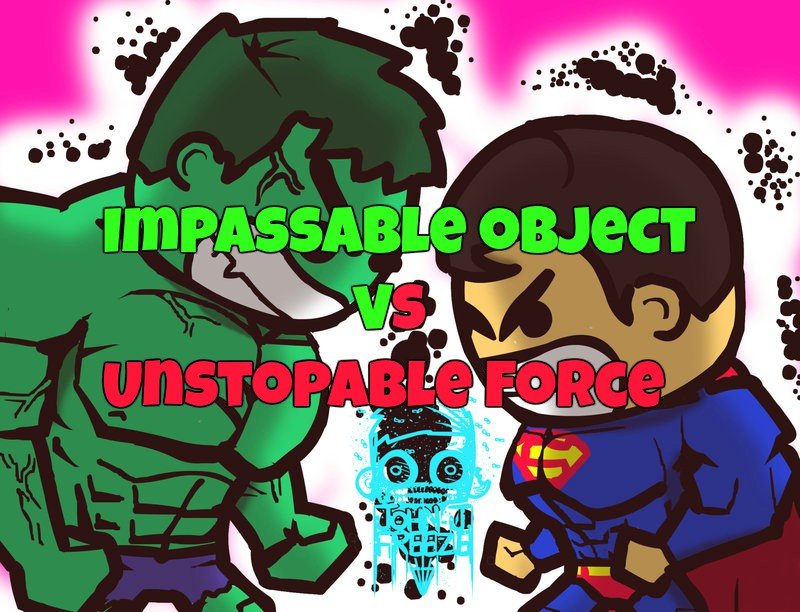
What happens when an unstoppable force meets an impassable object?
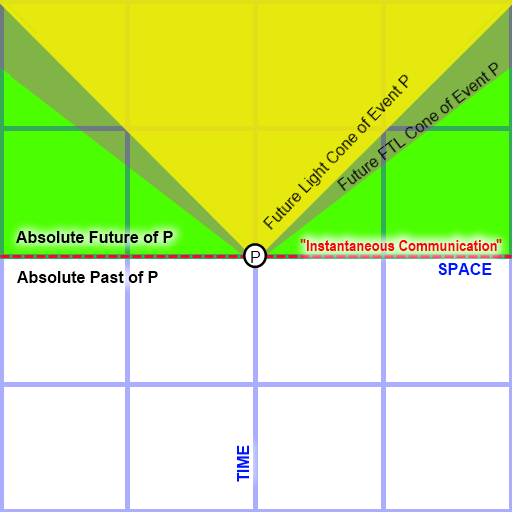
The most impassable barrier in this universe is the light cone. Can a particle escape even this barrier using quantum tunneling to travel faster than light? In relativistic quantum theory, the light cone is still a barrier, and real particles cannot go faster than light. A virtual photon or electron, however, can travel faster than light.
We never see virtual particles directly, but we can sometimes see the effects of virtual particles on real particles.
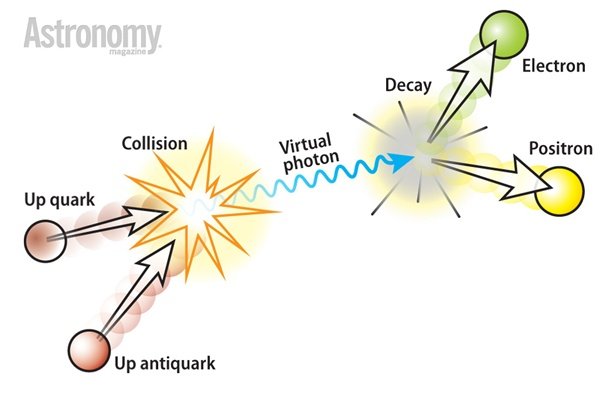
The presence of virtual particles makes the light cone slightly fuzzy, its limits less clear. The fuzziness, or indeterminacy, of the edges of a light cone has an amazing consequence for black holes. Recall from Light Cones and Black Holes that gravity from a black hole bends all light cones inside the event horizon inward, toward the singularity.
English physicist Stephen Hawking applied quantum physics to particles in warped space-time and showed that black holes participate in the laws of thermodynamics.
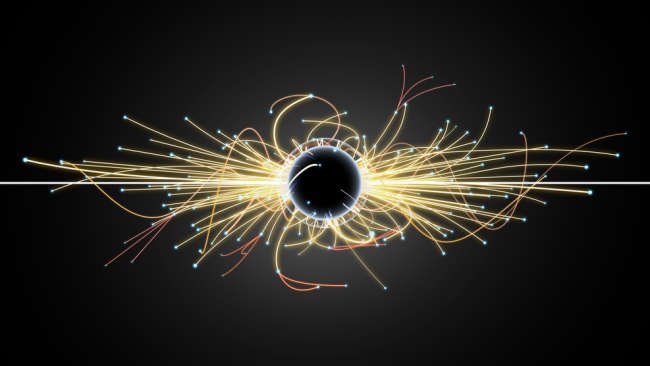
This means that black holes are not exactly black. They emit Hawking radiation, photons and other particles, because they have a temperature above absolute zero. Hawking radiation is extremely weak only a hundredth of a millionth of a billionth of a watt. Black holes lose energy and shrink, albeit very, very slowly.
We can look at Hawking radiation as quantum tunneling, but there is another possibility.
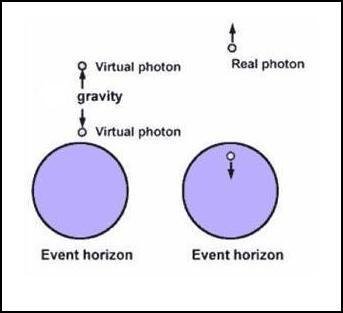
- Very close to the event horizon, virtual particle-antiparticle pairs appear and disappear in the quantum vacuum.
- Sometimes one virtual particle is swallowed by the black hole and the other escapes to become a real particle.
- The escaped particle has positive energy; the swallowed particle has negative energy.
- In effect, the black hole loses energy.
The nature of Hawking radiation is still a bit of a puzzle in physics, called the black hole information paradox.

When a black hole forms from a collapsing star, we seem to lose a lot of information. One current theory is that the information is not lost but scrambled; it returns to us as Hawking radiation. If this is true, then Hawking radiation is a kind of quantum tunneling of information.
In quantum physics, just about everything is possible, if something is impossible, there must be a very important reason.
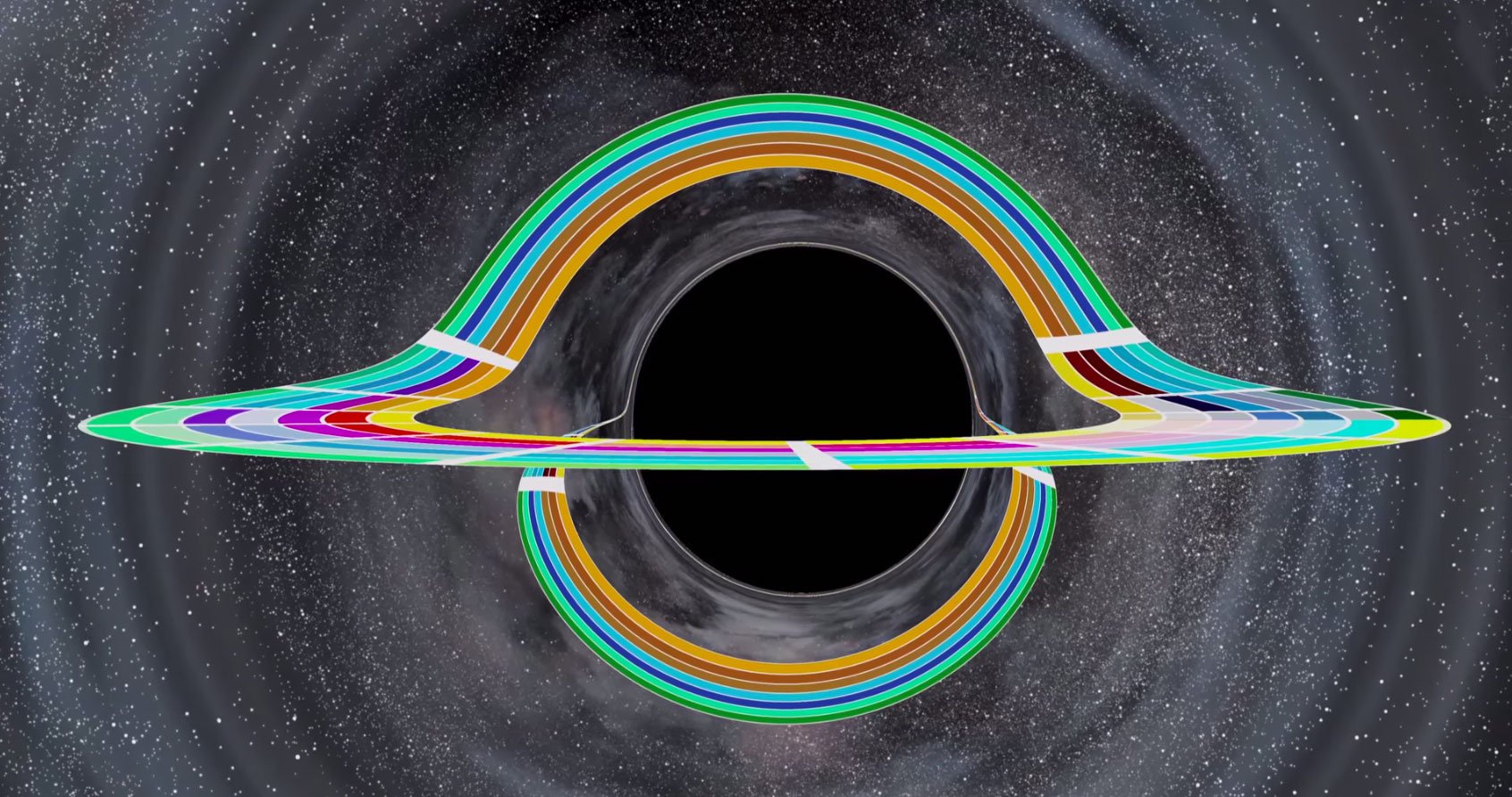
Quantum tunneling makes many things previously thought to be physically impossible merely statistically impossible. The term “tunneling” is standard, but it gives the erroneous impression that a quantum particle finds some alternate route (like a wormhole) to get past a barrier. A better term for this phenomenon would be "quantum delocalization".
End Part 7
PART 1, PART 2, PART 3, PART 4, PART 5, PART 6, PART 7, PART 8
Image Credits:
http://img07.deviantart.net/097f/i/2015/165/5/0/marvel_vs_dc__hulk_vs_superman_by_johnjfreeze-d8x95yw.jpghttp://i180.photobucket.com/albums/x58/riidii/FTLDiagram.pnghttp://www.astronomy.com/-/media/Images/News%20and%20Observing/Ask%20Astro/2014/07/Quirkyconversion.jpg?mw=600http://cdn.iflscience.com/images/87b7fe90-9686-5aa7-af2f-1fa83075a331/large-1471015959-cover-image.jpghttp://3.bp.blogspot.com/-2tIGFPwO7A4/UM-6uJJrIpI/AAAAAAAAAIo/t7AK-gTwPdw/s1600/hawking+radiation.jpeghttp://www.nature.com/polopoly_fs/7.9804.1364925535!/image/event-horizon.jpg_gen/derivatives/fullsize/event-horizon.jpghttp://cdn.slashgear.com/wp-content/uploads/2015/02/warp.jpg
